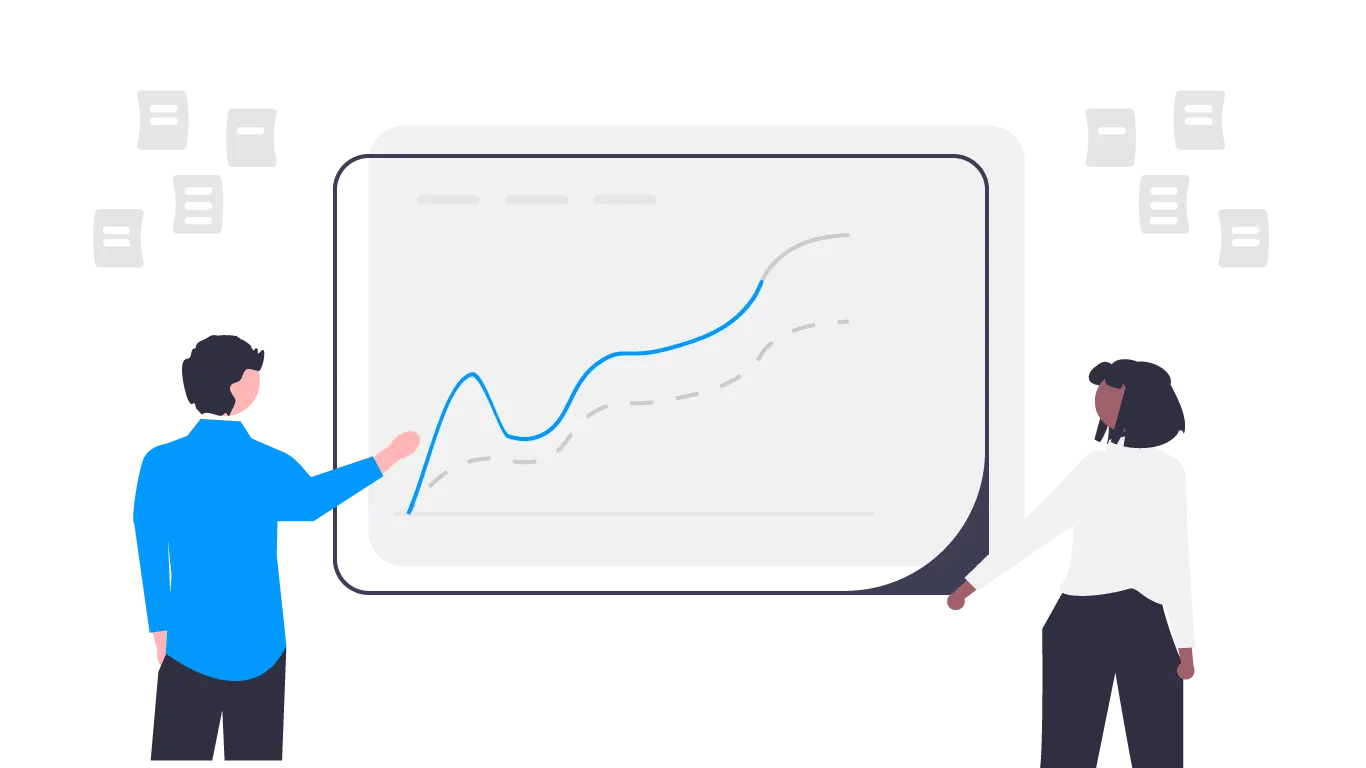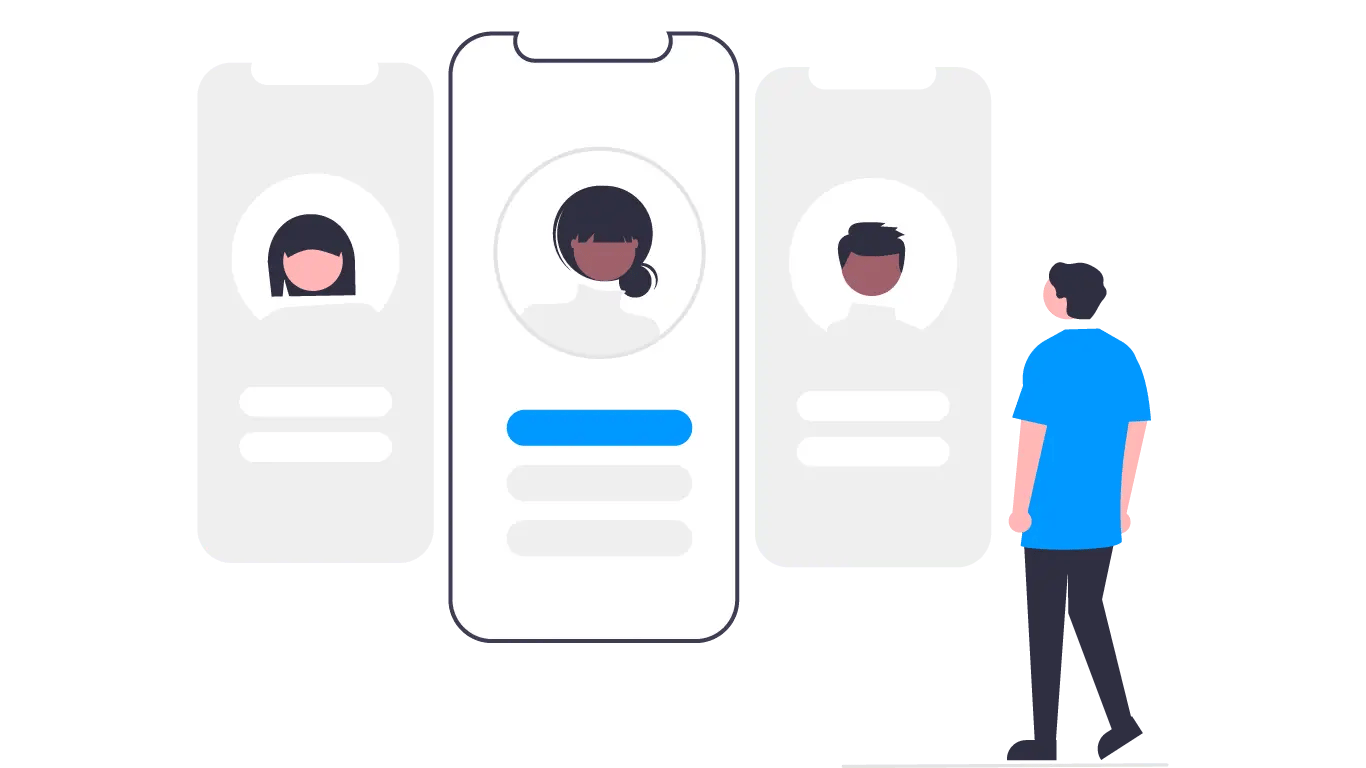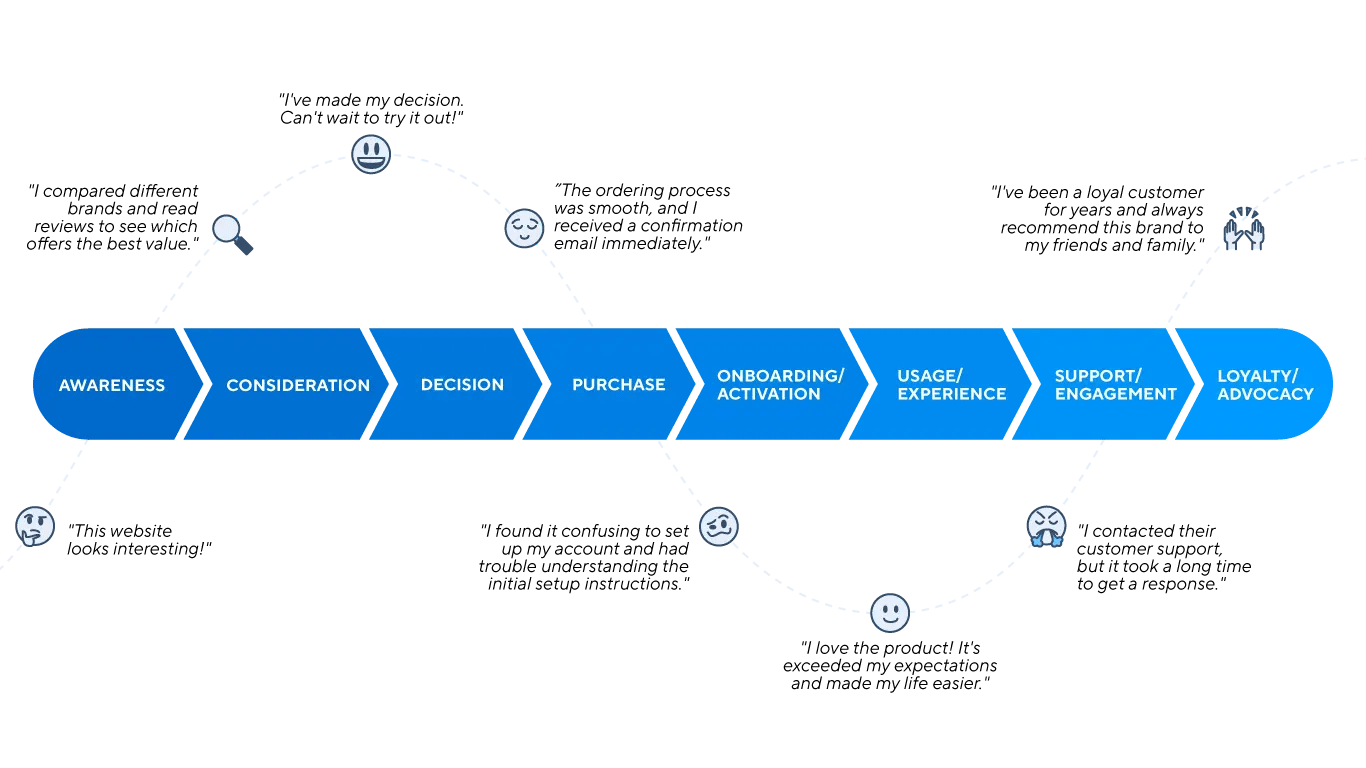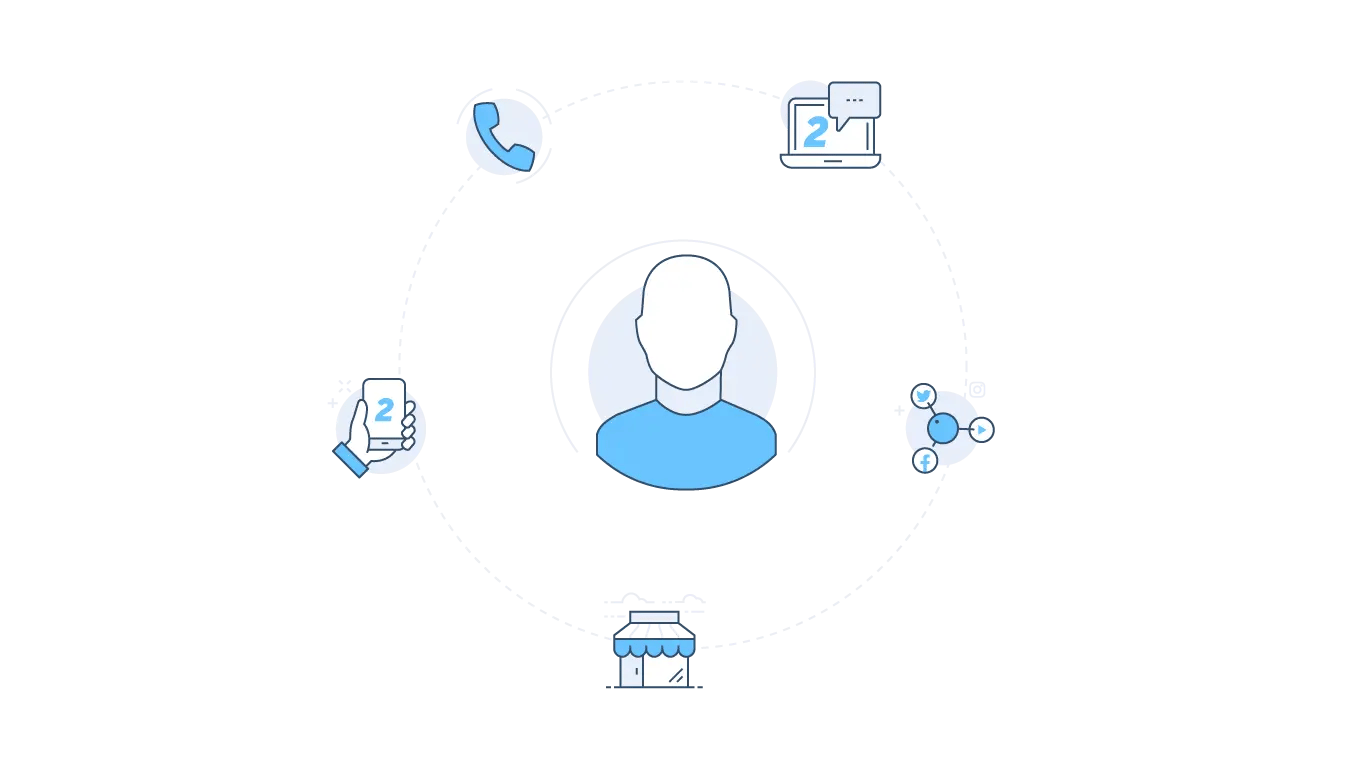
In today's competitive business landscape, customer experience (CX) plays a vital role in driving success.
A well-crafted customer experience management (CEM) strategy can differentiate your business. It will help foster customer relationships and boost your bottom line.
The Fundamentals Of Customer Experience Management Strategy
Let’s start with understanding what customer experience is and why it’s so important for organizations to focus on it.

What is Customer Experience (CX)?
Customer experience (CX) refers to the overall perception and feelings a customer has towards a brand throughout their journey.
Customers are experiencing your brand even if it’s something you’re not focusing on.
Every touchpoint, from social media to customer service and in-person experiences shapes how the customer feels about your brand. They can walk away with positive feelings of joy and trust, or the opposite.
If you want more details on customer experience management and more details to help inform your CX strategy, check out our article:
The Importance of Customer Experience Management (CEM)
Customer experience management involves being intentional and strategic in creating positive interactions with customers.
By focusing on great customer experience, businesses can:
- proactively identify pain points,
- address customer needs,
- and create a consistent and exceptional experience.
Did you know that organizations that focus on CEM, benefit from enhanced customer loyalty, higher retention rates, and increased customer advocacy?
What is a Customer Experience Management Strategy?
Customer Experience Management (CEM) strategy is the comprehensive plan and approach that an organization adopts to create, enhance, and manage the interactions and relationships between customers and the company.
The goal of a customer experience management strategy is to deliver a positive, consistent, and personalized experience to customers throughout their entire journey with the company, from the initial touchpoints to post-purchase support and beyond.
Why You Need A CX Management Strategy?
Implementing a CX strategy is essential for effective customer experience management. It can bring a number of tangible and intangible benefits to businesses, including:
- Increased customer satisfaction
Satisfied customers stick around and become repeat customers. They also share their positive experiences with others and help attract new customers.
- Builds brand reputation
A consistently positive experience helps customers build trust and emotional connections with the brand. This translates to loyalty and brand advocacy.
- Fuels revenue growth
Companies that prioritize CX see 3 times more revenue growth. This demonstrates the impact of a successful customer experience on a company's bottom line.
The Building Blocks Of A Customer Experience Management Strategy
Here we’ll explore how to get started in building an effective customer experience strategy.
1. Understand Your Customers

Conduct Customer Research And Segmentation
Use methods like surveys, interviews, and analytics for research.
Customer research will give you valuable insights into customer demographics, motivations, and pain points.
Consider segmenting your customer base by shared characteristics. This will allow you to tailor messaging and experiences to specific groups.
Create Buyer Personas
A buyer persona is a fictional representation of your ideal customer. Using this tool can help you visualize your customer segments, their needs, preferences, and pain points.
This will allow you to create experiences that resonate with your customer segments.
For example, consider a software company targeting small business owners.
They can create a buyer persona called "Savvy Entrepreneur Sarah." Her tech-savvy persona would reflect her desire for efficiency and user-friendly interfaces. The company can then use this knowledge to tailor its product, user interface, and customer support to meet Sarah's needs.
2. Define Customer Touchpoints

Touchpoints are the various interactions and points of contact customers have with your brand.
Improving customer experience is all about identifying and optimizing these touchpoints.
Start by mapping out all the touchpoints across the customer journey both online and offline. This includes website visits, social media interactions, in-person experiences and more. Understanding each touchpoint will help you evaluate how it impacts the overall experience.
Here are examples of touchpoints that can exist at each stage for an e-commerce retailer. Remember, they can vary by industry and business model.
|
Pre-Purchase Touchpoints
|
Purchase Touchpoints
|
Post-Purchase Touchpoints
|
- Website
- Social media interactions
- Social media ads.
- Online reviews and ratings.
- Recommendations from friends, family, or influencers.
- Search engine results and online research.
- Email newsletters and promotional campaigns.
- Product demos or free trials.
- Customer support inquiries before purchasing.
- Live chat or chatbot interactions.
- Physical store (for brick-and-mortar businesses).
|
- Product selection and adding items to the cart.
- Online checkout process.
- Payment options and security measures.
- Order confirmation and receipt.
- In-store purchase and point-of-sale interactions (for physical retail).
- Customer service assistance during the purchase.
- Loyalty program or discount code application.
|
- Order tracking and delivery updates.
- Packaging and unboxing experience.
- Product usage instructions or onboarding materials.
- Customer support for any post-purchase inquiries or issues.
- Returns and exchange processes.
- Review and rating submissions.
- Follow-up emails or surveys.
- Loyalty program rewards or incentives.
- Personalized recommendations based on previous purchases.
- Social media engagement and sharing experiences.
|
3. Create a Customer Journey Map

Start visualizing your customer's journey from problem awareness to post-purchase stages.
It is a powerful exercise that will help you understand your customers' experiences from all angles.
By documenting each step and touchpoint, you can:
- Identify pain points,
- Find bottlenecks,
- and uncover opportunities for improvement at every stage.
For example, consider a mobile service provider mapping their customer's journey.
They may discover that their activation process for new customers is complicated and time-consuming. The process can be simplified and streamlined in order to enhance customer satisfaction and experience.
4. Set Customer Experience Goals

Next, you must set clear and measurable customer experience goals that align with your business objectives.
You can focus on:
- Increasing customer satisfaction scores,
- Reducing customer churn rates,
- Improving customer retention,
- or enhancing customer loyalty.
By measuring and tracking these metrics, you can track your progress and adjust based on the data.
How To Implement A Customer Experience Management Strategy
Now that you’ve gathered data, mapped your customer's journey and set your goals, it’s time to implement a strategy. In this section, we will explore key areas to focus on and cover actionable steps to create memorable customer experiences.
1. Create A Customer-Centric Culture

Foster A Customer-Focused Mindset Across The Organization
Customer experience management (CEM) strategy is about creating a mindset of customer centricity. And it’s crucial to foster this mindset across the organization.
Customer-centric culture can be cultivated in the following ways:
- Lead by example:
Leaders should prioritize and demonstrate customer-centricity in their actions and decisions.
- Emphasize the importance of customer experience:
Regularly explain the importance of exceptional customer service. Show how it impacts business success.
- Share customer feedback and success stories:
Share positive customer feedback and success stories with employees. This highlights the impact of their work on customer satisfaction and loyalty.
Empower Employees To Deliver Exceptional Customer Experiences
Employees, especially customer-facing ones, are critical to the success of your customer experience (CX) efforts.
To make employees more customer-centric, follow these steps:
- Recognize and reward customer-centric behaviors
Shine a light on team members who go above and beyond to deliver exceptional experiences. Establish a recognition program or give shout-outs during daily huddles, team meetings or in team chats.
- Empower employees with autonomy
Provide employees with the authority and autonomy to make decisions. This will enable them to prioritize customer satisfaction and resolve customer issues promptly.
- Incorporate customer experience goals into performance evaluations:
Align goal-setting and performance evaluations with customer experience metrics. It emphasizes the importance of customer-centric behaviors and outcomes.
- Provide training:
Offer training sessions or workshops that educate employees. Provide insight into customer needs, expectations, and how their role contributes to overall CX.
- Gather and act on employee feedback:
Create channels for employees to provide feedback. Include suggestions for improving the customer experience. Actively listen and implement relevant ideas.
2. Design Customer Experience Processes

Streamline Customer-Facing Processes And Eliminate Friction
For seamless customer experience (CX), you must streamline any customer-facing process. This includes order placements, returns, customer support, billing and payment. Identify and eliminate any friction points that may disrupt customer interactions.
Streamlining customer-facing processes can be achieved in several ways:
- Include Automation and Self-Service:
Implement self-service options and automation. This can include online knowledge bases or interactive chatbots. Empower customers to resolve issues and complete transactions independently.
- Offer Omnichannel Experience:
Provide consistent and unified interactions. Give customers the ability to start an interaction on one channel and seamlessly transition to another without losing context.
- Provide Clear and Transparent Communication:
Maintain open and honest communication with customers, keep them informed of order status, shipping status or any issues or delays.
- Optimize Response Time:
Implement systems and processes to promptly handle customer inquiries. Whether it's through live chat, email, or phone. Ensure a timely and satisfactory resolution.
And it continues well after they have made a purchase.
Align Internal Processes To Meet Customer Expectations
While working on customer-facing processes is vital, aligning internal processes is equally important.
Here's how to ensure departments and teams work together cohesively for exceptional customer experience:
- Identify Cross-Functional Dependencies:
Examine how different departments contribute to the customer experience. Identify key points of collaboration between functions like marketing, sales, customer service, and product development.
- Implement Clear Communication Channels:
Ensure that internal communication channels are established for team collaboration and knowledge sharing. Use project management tools like Trello or Asana and chat tools like Slack or MS Teams and keep everyone informed about customer-related initiatives.
- Share Customer Feedback Across Teams:
Implement a system to capture and share customer feedback across departments. Encourage teams to learn from both positive and negative feedback and use it to make necessary improvements.
- Continuously Improve Processes:
Regularly review and refine internal processes based on customer feedback and changing expectations. Embrace a mindset of continuous improvement.
3. Provide Personalization and Customization

Leverage Data And Technology
Personalization is a powerful strategy for enhancing customer experiences.
Here's how to leverage customer data and technology to tailor interactions and offerings.
- Collect and analyze customer data:
Customer data is crucial for understanding preferences, behaviors, and needs. This is the foundation for effective personalization efforts.
- Use customer relationship management (CRM) systems:
CRMs provide a comprehensive view of each customer, including past interactions and purchase history. This makes it possible to better tailor service and offerings.
- Customize communication channels:
Allow customers to choose their preferred communication channels. Give them options, whether it’s phone, email, social media, live assistance and more.
- Provide Personalized Recommendations:
Use customer data and predictive analysis to offer tailored product recommendations, content suggestions, or personalized offers that align with individual preferences.
Implement Strategies For Customization Based On Individual Preferences
Beyond personalization, successful CEM strategies allow customers to customize their experiences according to their specific needs.
Take Starbucks, for instance. In-store and through the mobile app, customers can customize their orders with specific instructions and preferences. This level of customization not only provides a tailored experience but also makes customers feel heard and valued.
4. Implement An Omnichannel Experience

Ensure A Seamless And Consistent Experience
Today’s customers expect seamless experiences across multiple channels. That means that no matter which channels they reach out on, the experience must remain consistent.
Here’s how you can ensure consistency in your customer experience:
- Sync data and information:
Ensure that customer data, purchase history, and preferences are synchronized across channels. It provides a full view of each customer regardless of what channel they’ve interacted on. Use a CRM, omnichannel contact center, and integrations & APIs to connect different systems.
- Enable cross-channel continuity:
Allow customers to start interactions on one channel and seamlessly transition to another. An omnichannel communication platform can allow this level of flexibility and continuity.
- Implement omnichannel customer service:
Offer consistent and integrated customer support across channels. In this way, customers can reach out for assistance in the manner they prefer. They can do so without having to repeat information.
- Maintain visual and brand consistency:
Use consistent branding elements, design styles, and messaging across all channels. This will create a cohesive and recognizable experience for customers.
Integrate Online And Offline Touchpoints To Create A Unified Customer Journey
Integrating online and offline touchpoints is key to creating a unified customer journey. Information and interactions should flow seamlessly between different channels. By doing so, customers can enjoy a seamless experience.
For instance, consider a clothing retailer.
They may enable customers to browse products online, check stock availability, and reserve items for in-store pickup.
This creates a bridge between the online and offline worlds. Customers get the convenience of digital interactions while still enjoying in-person interactions.
5. Implement Feedback Mechanisms

Collect Customer Feedback
Customer experience is an ongoing journey, and customer feedback is essential to continuous improvement.
You can collect feedback in the following ways:
- Surveys and Feedback Forms:
Create and distribute surveys to gather structured feedback from customers.
- Social Media Monitoring:
Monitor social media platforms. Capture customer feedback, comments, and mentions about your brand.
- Online Reviews and Ratings:
Regularly analyze online reviews and ratings on platforms. Look at review websites and app stores to understand customer perceptions, both negative and positive.
- Customer Support Interactions:
Use customer support interactions to gather feedback and insights. Review call transcriptions, recordings and use sentiment analysis tools to identify recurring patterns or issues that can be improved.
Analyze Feedback
Once you have collected customer feedback, analyze the data for greater insights into how to improve. Here’s how:
- Categorize and Prioritize:
Organize feedback into relevant categories and prioritize based on its impact and frequency.
- Quantitative Analysis:
Analyze numerical feedback data to identify trends, averages, and correlations.
- Qualitative Analysis:
Dive deeper into open-ended responses to understand underlying reasons and specific suggestions.
- Benchmarking:
Compare feedback against industry standards or internal benchmarks to assess performance.
- Collaborate and Iterate:
Share insights with relevant teams, collaborate to brainstorm solutions, and make continuous improvements based on feedback
Measure And Improve Your Customer Experience Strategy
We've laid the groundwork for your customer experience management strategy. Now it’s time to measure its effectiveness. In this section, we’ll go through steps to effectively measure and optimize your CX efforts.
Track Key Customer Experience Metrics

It is important to track the effectiveness of customer experience strategies. You can do this by monitoring key performance indicators (KPIs)
Let's look at a few key customer experience metrics you should be tracking:
- Net Promoter Score (NPS): This measures customer loyalty and advocacy. It asks customers how likely they are to recommend your brand. The higher the score, the more likely they are to recommend, indicating a stronger customer relationship.
- Customer Satisfaction (CSAT): CSAT measures how satisfied customers are with their experiences. It typically involves post-purchase surveys or feedback forms. By tracking CSAT scores, you can assess how well you're meeting customer expectations.
- Customer Effort Score (CES): CES focuses on the ease of customer interactions. It measures the effort customers have to put in to accomplish tasks or resolve issues. By minimizing customer effort, you can create smoother experiences and foster customer loyalty.
Use Analytics For Insights Into Customer Behavior

Data-driven insights can inform your decision-making for greater customer experiences.
Here’s how to leverage data analytics for greater insights:
- Data Segmentation:
Analyze customer data to segment your audience based on demographics, purchase history, browsing behavior, or other relevant criteria.
- Pattern Recognition:
Use analytics to identify patterns and trends in customer behavior. This can include patterns or triggers that influence purchase decisions.
- Customer Lifetime Value (CLV) Analysis:
Understand the long-term value of different customer segments. This helps organize resources and personalize experiences for high-value customers.
- Product Recommendations:
Use data analytics to generate personalized product recommendations. This can be based on customer preferences, past purchases, or browsing history. You will be able to upsell and cross-sell more effectively.
- Churn Prediction:
Develop models using data analytics to predict customer churn. Businesses can keep customers by recognizing signs of leaving and reasons for it. They can then take actions to overcome their concerns.
- Sentiment Analysis:
Use sentiment analysis tools to understand customer emotions and attitudes expressed during interactions.
Continuously Improve And Adapt

An ongoing commitment is essential for a successful customer experience (CX) strategy.
The following steps will help you continuously improve.
- Embrace A Mindset For Improvement
Foster a culture of feedback and learning. Encourage team members to share insights and suggestions for improvement. Remember, the best ideas often come from those who interact with customers directly.
- Adapt And Optimize Strategies Based On Feedback And Data Analysis
Refine and optimize your strategies based on feedback and data analysis. Actively listen to customer feedback, whether it's through surveys, reviews, or social media. Take this feedback as an opportunity to fine-tune your customer experience initiatives.
- Regularly Review Customer Experience Metrics
Regularly review your customer experience metrics to track progress and identify areas that require attention. This will allow you to make data-driven decisions and stay on top of evolving customer expectations.
Final Thoughts: Customer Experience As a Mindset
Invest in understanding your customers, empower your employees, and leverage technology to personalize interactions. By doing so, you'll gain a competitive advantage and create a lasting impact.
Customer experience management is not just a strategy; it's a mindset that puts your customers at the heart of everything you do. Your customers are waiting for experiences that will make them say, "Wow!" Are you ready to deliver?
Embrace the power of customer experience management and discover uContact, the omnichannel contact center solution for personalized service in every interaction –across every channel.














